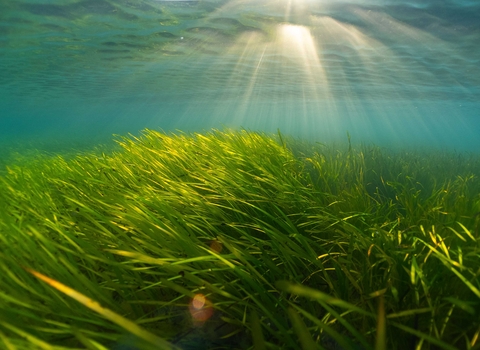Our climate is changing, and this will significantly impact our local economy, nature, and communities.
Hampshire and the Isle of Wight will suffer from hotter, drier summers; with a 20-60% reduction in summer rainfall. Within Hampshire alone, more than 20 neighbourhoods have been identified as particularly vulnerable to extreme heat, including 5 in Test Valley and 7 in Rushmoor. In addition, predicted sea level rise of around 30 cm by 2040 and increased winter rainfall (of up to 35% by 2080) will lead to more frequent and costly flooding events; such as those seen at Farlington Marshes and across the Portsmouth coast as well as inland in Winchester and Romsey in recent years . Many of our coastal areas and precious sites are at risk.
Natural or ‘nature-based’ solutions are a potential ‘win-win’. By protecting and restoring nature we can - at the same time - harness the power of healthy natural habitats to protect and enhance our lives in the face of climate change.
Healthy habitats can store carbon, or help us adapt to the impacts of climate change. Forests, wetlands, and other ecosystems can act as natural buffers against extreme weather - such as flooding and droughts - saving lives and protecting houses, crops, water supplies and vital infrastructure.
What needs to change?
Nature-based solutions need consistent, stable policy and funding frameworks, in order to help build confidence and support investment. We need the next Government to step-up its support for nature-based climate solutions nationally, so we can deliver more and more-quickly at a local level.
-
More natural habitats to help stop flooding - Floodplains are hugely valuable as for natural flood prevention. They can retain up to five times more water throughout the year compared to improved grasslands, which are managed to increase productivity (usually through ploughing or herbicide use). The Rivers Test and Itchen were once connected to their floodplains, the loss of which contributed to the serious floods of 2014. Creating joined-up networks of healthy floodplain meadows across the landscape could mitigate soil erosion and pollution, and prevent serious flooding in the future. For example, the capacity of Fishlake Meadows to absorb water only grows, and the restoration of the floodplain will help to protect Romsey from future flood events, Our careful management of the river and surrounding land at our Winnall Moors reserve has likewise been proven to have helped protect residential areas from flooding in recent years.
We also need the Government to prioritise natural coastal defences where possible to help protect important sites and communities from the impacts of sea-level rise.
The Government promised to double the number of government funded flood-risk mitigation projects which include nature-based solutions (NBS) by 2027. In September 2023 the Environment Agency and Defra announced £25 million funding for improving flood resilience through a new Natural Flood Management (NFM) programme, aiming to help meet the target for 260 NFM projects in 2021-2027. However, this amount is just a drop in the ocean. We need the next government to commit to invest much more in natural flood defences and associated habitat restoration to help address both inland and coastal flood risk and erosion. The total value of the flood risk reduction and other benefits arising from Natural flood management techniques has been proven to substantially outweigh the total. To deliver these benefits, we need natural flood management as part of a long-term plan to mitigate the impacts and protect existing habitats and communities.
-
Create a National Habitat Restoration Fund – Grasslands and wildflower meadows are vital for helping nature and storing carbon. A number of our nature reserves comprise of species-rich grassland, including St Catherine’s Hill in Winchester and Arreton Down on the Isle of Wight. Not only are these reserves contributing to a wider network of carbon dioxide absorbing grasslands, they provide habitat for invertebrates and other wildlife. At Barton Meadows nature reserve in Winchester we have reverted arable fields (which are net carbon emitters) to wildflower meadows (which are net absorbers), and are noticing increased soil invertebrate populations as well as a surge in pollinating insects. Combined, these nature reserves cover over 97 hectares of land, capable of locking away around 11,000 tonnes of carbon.
Previous nature recovery funds have been too small and too short-term. For example, the Green Recovery Challenge fund was only £40 million, and only focused on projects that could be delivered within one financial year, undermining the potential for more long-term viable pipelines of work. We need a fund of at least £5 billion over the course of the next parliament to help restore habitats needed to help nature and tackle climate change.
-
Protect our Blue Carbon - The marine environment has a huge role to play in locking up and storing carbon. Destroying these ‘Blue Carbon’ sources risks accelerating climate change , and could make Net Zero unachievable. It is essential that these important stores of Blue Carbon are recognised, monitored, and protected from damaging development and activities.
However protection alone is not enough. We need active restoration of blue carbon habitats, like the work we are doing through the Solent Seascape Project and our seagrass restoration programme.

